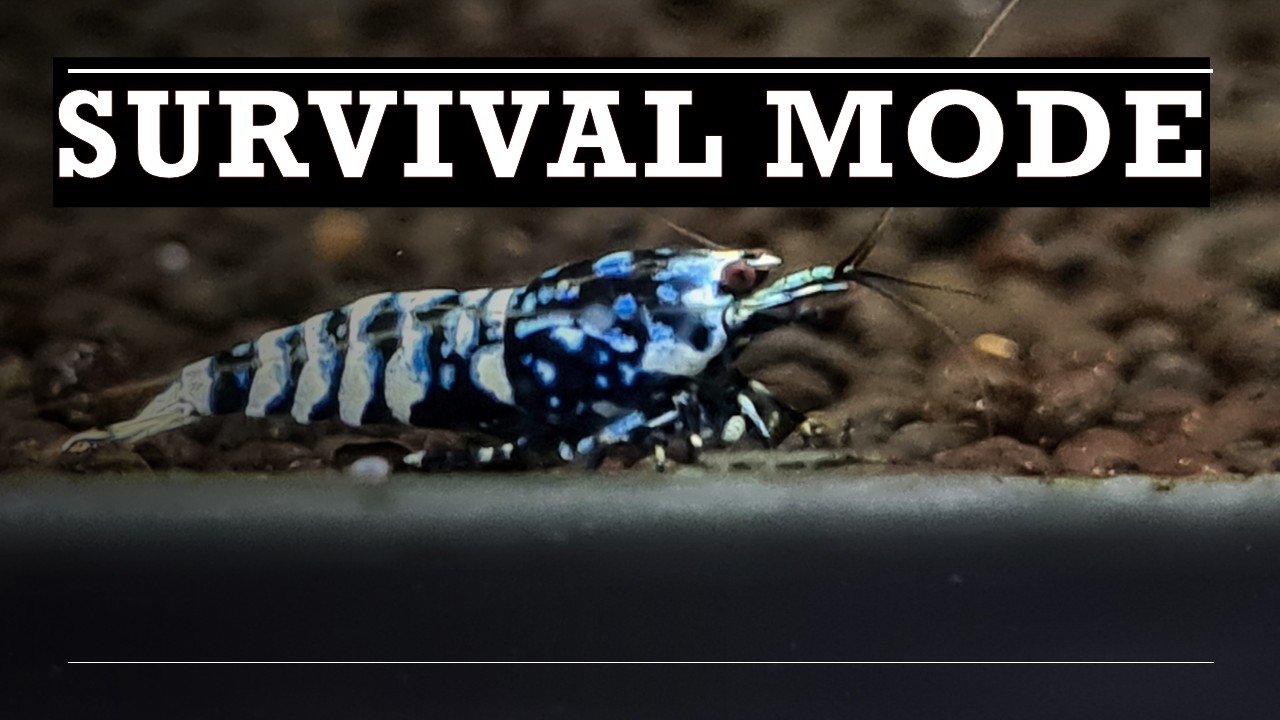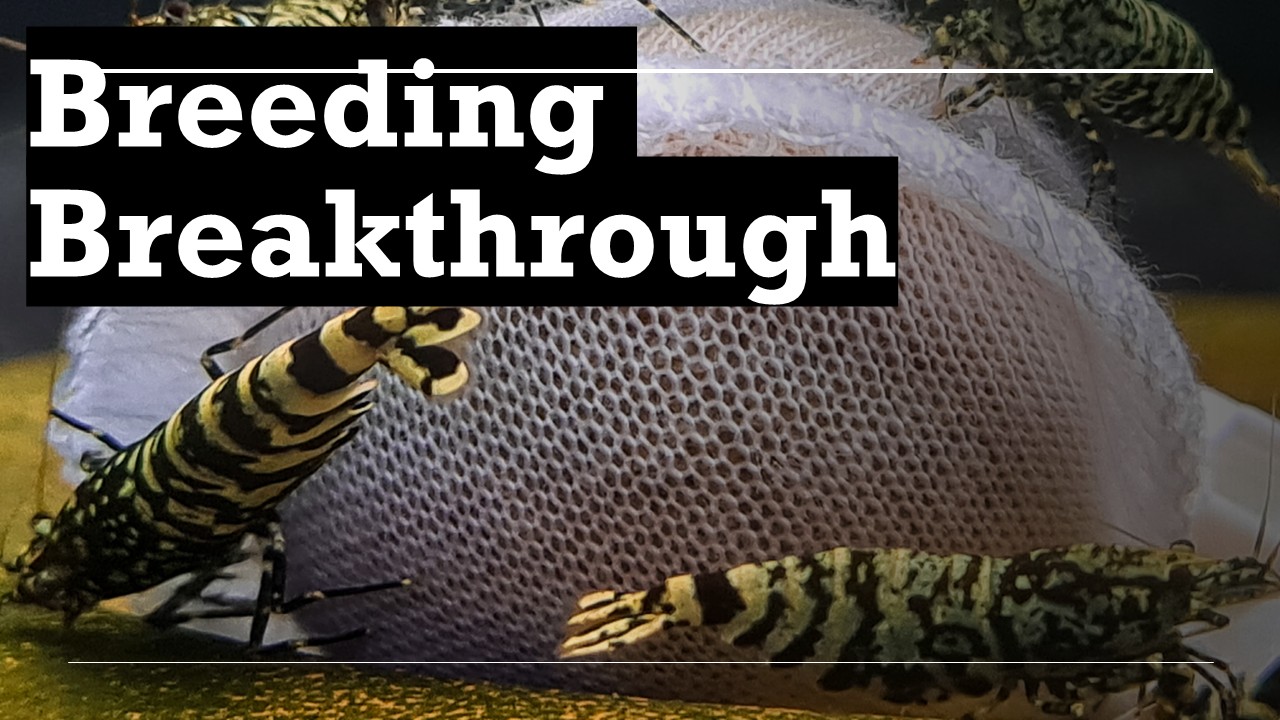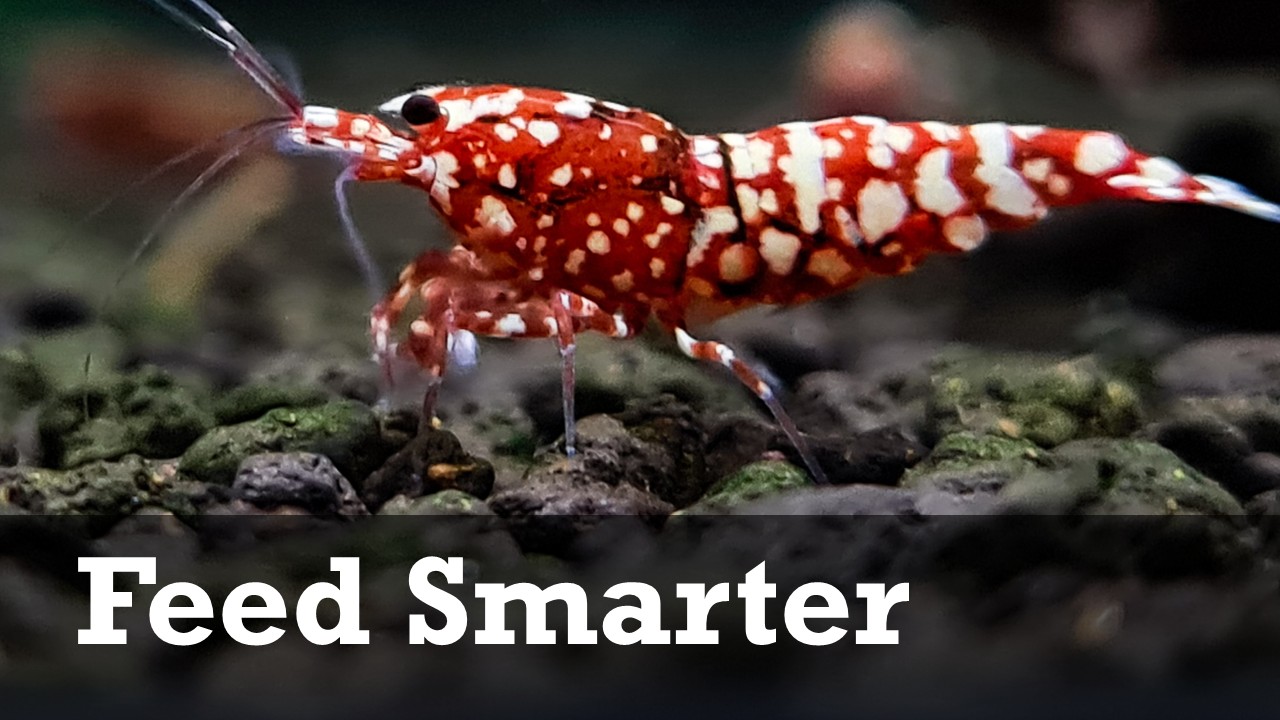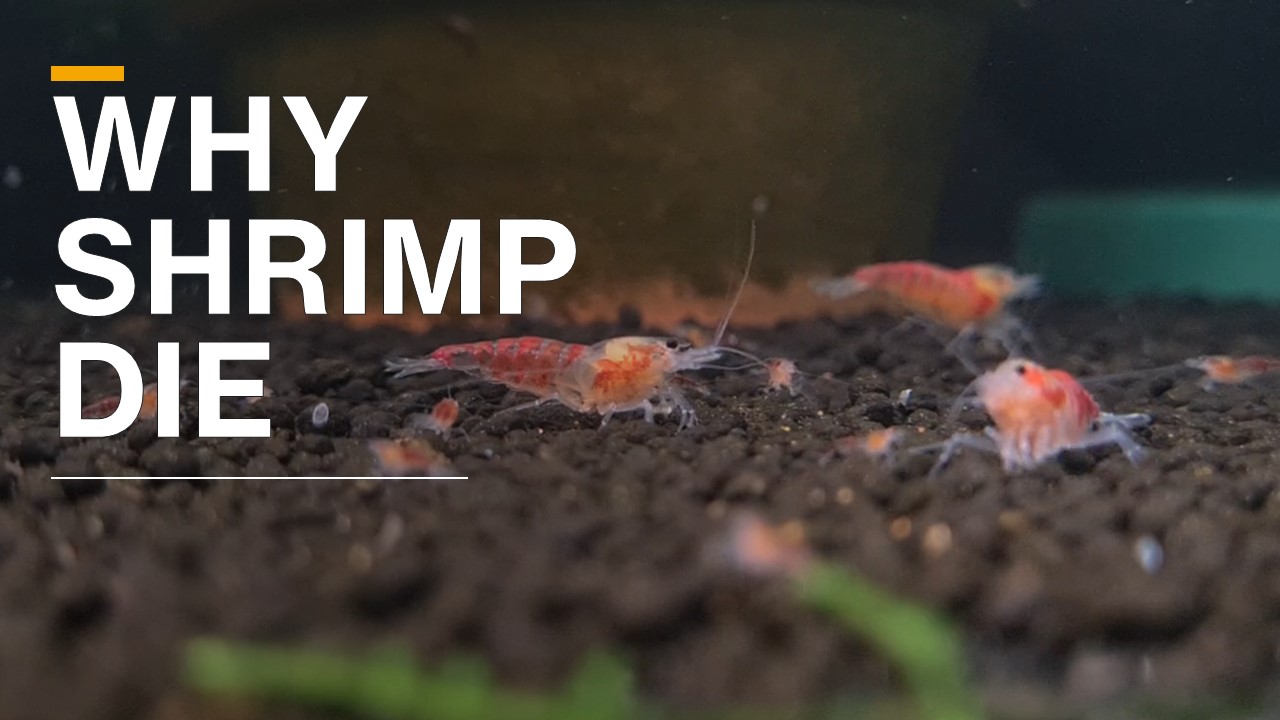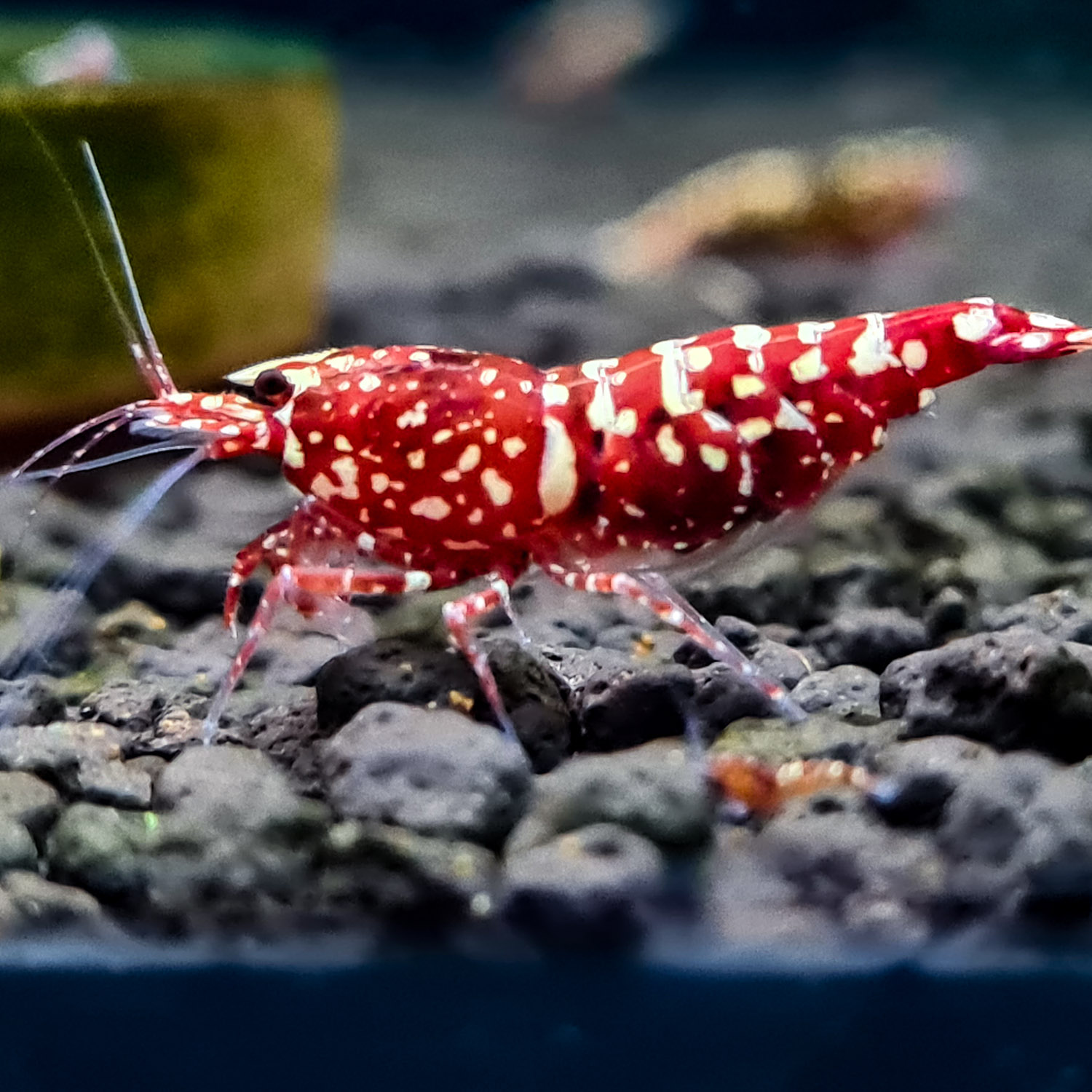
Intro
Many people love to talk about their successes in the shrimp hobby, but no one really mentions the failures. The lost shrimp, the mistakes, and the frustrating moments when everything seems to go wrong. When I first started, I believed that all it took was a little knowledge and effort, and my tanks would thrive. But it wasn’t smooth sailing. I lost more shrimp than I care to admit, and each loss was like a punch to the gut. Shrimp, which I had invested time and effort into, just seemed to disappear, and I didn’t understand why.
At the time, I didn’t have the knowledge I have now, and it felt like I was fighting an uphill battle. What I didn’t know was that these failures were part of the journey—critical learning experiences that would eventually push me forward, and help me grow in this hobby and beyond. It wasn’t just the tanks that needed improvement—it was my mindset.
Chapter 2: The Moment of Realization
There was a point in my journey where I thought I might give up on shrimp breeding altogether. I had lost a significant number of shrimp after a water change. I followed the routine, yet something went terribly wrong. I remember waking up the morning after and finding my shrimp lifeless, scattered across the tank. I was devastated.
But something inside me didn’t let me give up. Something clicked. I realized that these losses were not just setbacks—they were stepping stones. Losing shrimp wasn’t the end; it was an opportunity to learn and evolve. I had to understand why it happened and how I could prevent it in the future. The water change, something so seemingly simple, had killed my shrimp. But the answer wasn’t to avoid water changes altogether—it was to understand what had gone wrong. This realization sparked a deeper understanding of my tanks.
Every loss, every failure taught me more about water parameters, tank setup, and shrimp behavior than any success ever could. It was in those moments of despair that I began to appreciate the nuances of shrimp care. I didn’t just learn about the right temperature or pH levels; I learned how water changes impacted shrimp, how their environment needed to be just right.
Chapter 3: The Importance of Reflection
After each setback, I took the time to reflect. What went wrong? What could I have done better? This reflection process became my most valuable tool. I took notes, tracked water parameters, and paid closer attention to the behavior of my shrimp before and after water changes. I learned that a sudden shift in temperature, a quick change in pH, or an imbalanced tank could lead to losses.
That’s when I started to realize that failure was never permanent. It was part of the process. Reflecting on the losses, I figured out a way to do better next time. It was this habit of analyzing and learning from mistakes that built the foundation for my future successes. The next time I performed a water change, I did it with a better understanding of how the shrimp would react.
Mother Nature has always been the greatest teacher, offering lessons that resonate deeply, especially when it comes to the concept of change. One of the most profound lessons I learned was the way water changes mirror the natural rhythm of rain—constantly renewing and refreshing life. In nature, these changes are not random; they serve a purpose. During these cycles, natural selection takes place. The strongest survive, the most adaptable thrive, and only the best pass on their traits to the next generation. This is the beauty of change—it forces evolution and brings about stronger, healthier life forms. The same principle applies to our shrimp tanks. The best breeding stock rises from those who have withstood the trials of change and adaptation.
Imagine, for a moment, a world without rain. What would happen if the Earth no longer experienced this essential cycle? We are entrusted as stewards of Mother Nature, tasked with understanding her principles and faithfully applying them in our practices. Through this understanding, we act in harmony with nature’s processes, ensuring that we manage and nurture life in a way that respects and reflects her wisdom.
In another example, there was a time when I became distracted while performing a water change, resulting in an overflow. In response, we installed a flood sensor and a Wi-Fi enabled valve cutoff to prevent a similar issue in the future. However, the lesson here goes beyond the overflow itself; it’s about how we approach challenges. Do we simply give up when faced with a setback, or do we actively seek solutions to resolve the issue? This mindset parallels life itself. Life will inevitably throw unexpected challenges our way, but our response to these challenges is what truly defines us. It’s not about the problem, but about how we choose to overcome it.
yet another example on determining whether a method shared by commercial breeders is truly suitable for hobbyists is to test it under real-life conditions. Specifically, this means replicating the same number of setups and adopting the approach as a hobbyist with a day job and family responsibilities. Only then can we assess whether the method is sustainable over the long term for someone balancing a busy life with the demands of the hobby. This realization led to the creation of the “reset basket” concept.
The reasoning behind this is simple yet powerful: when you’re in the thick of a challenging situation—metaphorically “in the fire”—you’ll instinctively look for ways to improve and excel. I found myself with over 100 tanks, overwhelmed by the sheer volume of work required to maintain them. I was in that very fire. It became clear that I needed something more sustainable, a method that could help me manage the hobby without compromising other aspects of my life. The reset basket was born out of that necessity, designed to offer a more practical, long-term solution that could be easily incorporated into the lifestyle of a busy hobbyist. It is a system that not only simplifies the process but ensures that success can be achieved without burnout, making it a true game-changer for those serious about breeding and maintaining shrimp.
Chapter 4: Helping Hobbyists Grow from 1 Tank to 100 Tanks
I’ve helped global hobbyists grow from one tank to managing 100 thriving tanks, and I can tell you—it doesn’t happen overnight. The journey is full of bumps, learning curves, and difficult moments. But those who learn from their mistakes, like I did, start making better decisions and improving their tanks step by step.
In the beginning, it’s overwhelming. It’s easy to get caught up in the excitement, buy too many shrimp, or get too enthusiastic about changing water frequently, thinking it will solve everything. But the truth is, success comes with patience. Those who make it in this hobby are the ones who are persistent, who understand that each mistake is a lesson waiting to be learned.
I’ve seen hobbyists make the same mistakes I did—losing shrimp, struggling with water changes, and facing challenges they didn’t know how to handle. But what separates those who quit from those who succeed is the willingness to learn and adapt.
Chapter 5: Building Resilience in the Hobby
In the hobby, resilience is key. The ones who succeed aren’t necessarily the ones who get everything perfect from the start. They’re the ones who keep going, who learn from every loss, and who apply those lessons. Success doesn’t happen overnight. There’s no magic formula or easy solution to breeding shrimp.
I’ve seen hobbyists go from feeling defeated to becoming experts in their own right, and it’s inspiring to watch. They started with a single tank, unsure of how to properly manage water changes or adjust to the needs of their shrimp. But through trial and error, they found their rhythm. They learned from every mistake, and each time they lost a shrimp, they gained a deeper understanding of the process.
What I’ve come to realize is that those moments of defeat don’t define us. They shape us. The hobby is full of ups and downs, and each failure is just a stepping stone to greater success. Resilience is about picking yourself up after every setback and continuing to move forward.
Chapter 6: Turning Failure Into Success
Looking back, the losses I faced early on didn’t define me. They shaped me. And now, they shape the success of hobbyists around the world. The early days were tough, but each loss led to a deeper understanding of shrimp care. Today, I know exactly how to manage water changes, how to adjust my tanks to ensure the best environment for my shrimp, and how to prevent problems before they arise.
The key to success in shrimp breeding, or any hobby, is understanding that failure is part of the journey. You don’t lose unless you stop trying. If you’re willing to learn from your mistakes, success will follow. But it takes time, persistence, and an open mind. It’s about embracing each lesson, no matter how difficult it may seem at the time.
The journey of shrimp breeding is a marathon, not a sprint. Embrace the process, and soon you’ll be thriving. Success comes with learning, with adapting, and with understanding that nothing is perfect. It’s the unwavering resilience to keep pushing forward, even in the face of failure, because fear kills more dream than failure ever will. The true passion for this hobby lies in the relentless pursuit of progress—those who hunger for growth, for more vibrant, beautiful shrimp, will endure setback after setback, only to rise again. They will fail, they will stumble, but with each failure comes a deeper understanding, a renewed strength. It is through these struggles, these lessons learned the hard way, that they inch closer to success, never allowing the obstacles to extinguish their drive. For those who are truly committed, failure is just another step toward mastery.
Chapter 7: Conclusion – Keep Learning, Keep Growing
If you’re struggling right now, know this: it’s all part of the process. Keep reflecting, keep learning, and keep growing. The next setback might be your biggest breakthrough. Sometimes, it’s those moments of failure that push you to your greatest achievements.
The best is yet to come. Embrace the lessons, take each failure in stride, and keep moving forward. The shrimp hobby has its ups and downs, but with patience, persistence, and resilience, you will not only thrive, but you will help others do the same. Keep learning, and success will follow.
